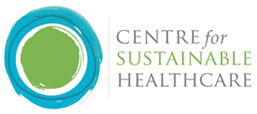- Group home
- You must register/login in order to post into this group.
Recycling reject water from the dialysis unit
By: East and North Hertfordshire NHS Trust
Water saving: 3,145,000 litres / year
£6,300 (Actual)
3.3 tonnes CO2e (Actual)
Waste (concentrate) water from the reverse osmosis (RO) unit at the Renal department is now recycled into the main soft water storage break tanks - these are very large tanks and serve our hot water requirements for the main hospital site. The calculated water saving is 3,145 M3/Year or 3,145,000 L/Year - cash saving of £6,300 p.a. - this consumption has been closely monitored since the installation and it can be verified as achieving this reduction on the subsequent water bills.
The installation costs to recycle the RO water (break tank, pumps & pipe-work etc) was in the region of £6k so that the pay back for this scheme was less than 12 months.
Carbon calculations
3.145 million litres diverted from sewerage annually and, through re-use, avoiding the need for supply of the same volume of mains water.
3.145 x 709 kg CO2e / million litres (water treatment)* + 3.145 x 344 kg CO2e / million litres (water supply)* = 3311 kg CO2e per year
Conversion factors taken from2012 Guidelines to Defra / DECC's GHG Conversion Factors for Company Reporting (Annex 9, Table 9a)
Renal Unit, Lister Hospital
Cost savings, reduce water wastage
A meeting with Veolia water (now Affinity Water) in the summer of 2010 agreed to share the cost to get in consultants to look at a water efficiency review at Lister hospital. The Water Efficiency Review Report picked up on the opportunities for RO water recycling and identified the water savings/pay back and budget cost of installation which was carried out by the Trust shortly afterwards.
